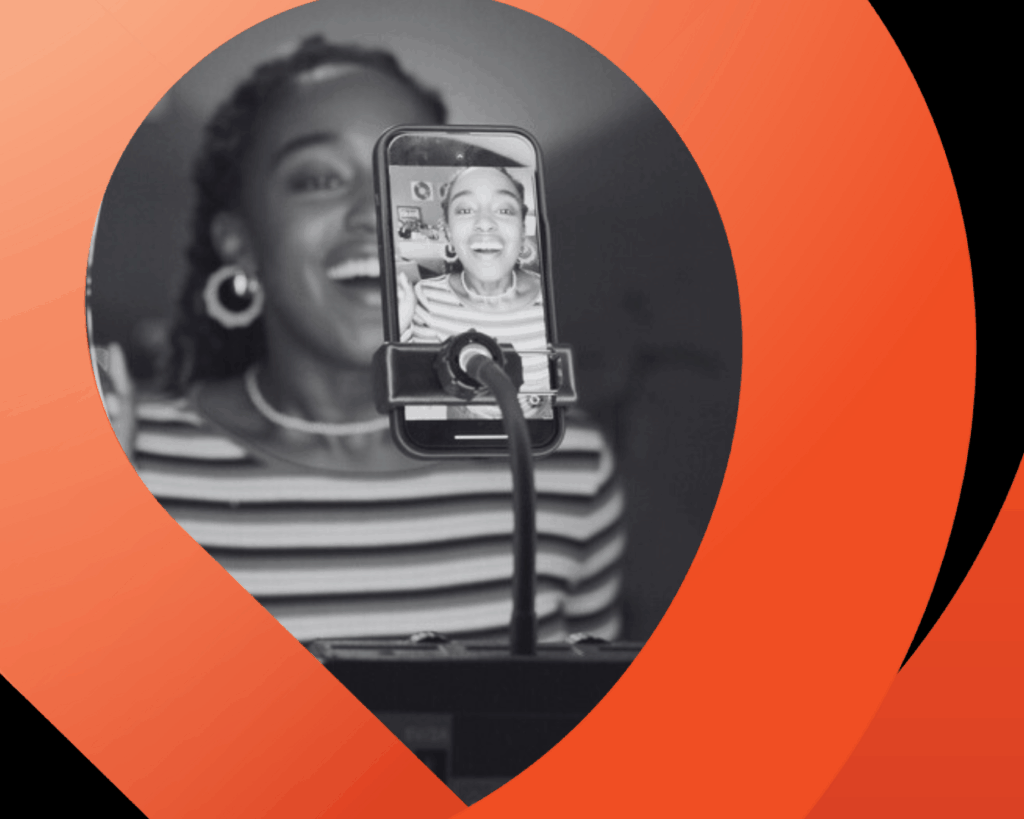Chapter 3 – Celebrities, Influencers and Marketing Pushback

You can check out the other chapters of the series at https://quester.com/perspectives/
Welcome to this edition of “Assume and Doom,” where we prepare you to potentially evolve the way you look at marketing to Millennials and Gen Zs:
- Millennials and Gen Zs are redefining influencing and advertising
- They can sniff out what they don’t think is real
- All of the attention on celebrity marketing is actually helping many become more aware of consumerism
Unlike previous articles in this series, investigating the narratives into this topic took us to some unexpected yet detailed areas related to the original assumption. We’re going to address some of it in this article, but have put together a more in-depth presentation that dives into more about this topic. Please contact us if you would like a copy of the presentation and talk to us about how we can help guide your marketing strategy.
We’re going to kick off this edition with a quick, true story:
A Gen X mom and her married Millennial daughter were talking about recent purchases they had both made. The daughter purchased a stroller for her young child that was endorsed by a parental influencer who was paid by the stroller company. The mom purchased a skin care product that a B-list actress extolled on Instagram, yet she was not a paid endorser. The daughter chided and made fun of her mom for being influenced by the actress. When the mom tried to turn the tables on her daughter, the daughter’s response was, “I was just doing my research and due diligence.”
This is a sign of how Millennials and Gen Zs have started to look at marketing and the role of influencers, which led to our assumption for this chapter of Assume and Doom.
Assumption: The best way to reach Millennial and Gen Z consumers is through celebrities and influencers
VERDICT: True but not in traditional ways. If brands want to reach younger consumers using celebrities and/or influencers, they need to steer away from typical, scripted, pre-produced television ads and marketing campaigns.
One of the main points that came from the narratives is there is a distinct difference between a celebrity and influencer endorsing a product. They may sound like the same type of person; a celebrity can be an influencer, and an influencer could be a celebrity. Consumers define celebrities as famous athletes and actors, where influencers are those who mainly reside in the social media space. There are exceptions who straddle the celebrity/influencer space, like Jake Paul, Addison Rae, Addison Rae, Emma Chamberlain, and David Dobrik. We found the distinguishing trait between them is influencers seem to be more discerning to endorse products that fit their expertise and personal brand.
The biggest example of this is in the news right now with the class action lawsuit against several athletes who endorsed the now-bankrupt FTX cryptocurrency exchange, alleging the celebrities “either controlled, promoted, assisted in [or] actively participated” in a plot to “aggressively market” the company. Shaquille O’Neal, one of the athletes named in the lawsuit, defended himself when he told CNBC, “A lot of people think I’m involved, but I was just a paid spokesperson for a commercial,” O’Neal says.
This explanation doesn’t seem to matter to consumers:
Yeah, he says that, but it’s mostly bulls*it. Shaq sponsors plenty of stuff he doesn’t use. He’s the sponsor for a betting app in Australia right now. Lol.
Shaq was on those, too. I was thinking about how many regular people saw those commercials, trusted FTX, and almost immediately lost a big amount of money.
This example is one of many where celebrities and influencers are paid for no other reason than who they are, whether they believe in or understand the product or not. Another FTX-related story surfaced recently about Taylor Swift rejecting $100 million by FTX to be one of the paid spokespeople when she had a problem with FTX dealing in unregistered securities. Swift got her legal team involved and asked questions rather than just accepting a large paycheck.
This hasn’t gone unnoticed by consumers:
Not just Elon Musk, but there are many more crypto schillers right now. Especially on Twitter, there are so many popular people shilling memecoins, just to make money and make you their exit liquidity.
Everyone got mad at Matt Damon for reading a script for a crypto exchange ad… nowhere in the ad does he personally advocate “buy bitcoin!” but people were basically mad at the dude for “telling them to buy right before the crash…ffs people these are not advocates for crypto, they are paid to shill whatever the hell will pay them to shill.
THANK U. I’m sick of ppl telling me I NEED something, or to ‘run don’t walk’ to buy something. Just exhausted w/ ppl continuing to promote.
But many were of the opinion that you are simply naïve if you believe that a celebrity is anything other than a paid spokesman who doesn’t really care about the product. While there weren’t a lot of people saying that it was a shame, these conversations demonstrate that there are people who still believe celebrities they see in ads.
Another example that stood out due to the backlash is the Vital Protein campaign featuring Jennifer Aniston (https://www.youtube.com/watch?v=C-BVPnK9IOI). Apparently, the highly curated ad, shot in a beautiful LA mansion, featuring Anniston doing yoga, journaling, working out, and living a wealthy lifestyle, did not have the effect on many consumers the company was hoping for:
I don’t care what that b*&#% says…she has botox. Same with…Cindy Crawford…claiming creams and vitamins make them look young. The fact that everything above the chin is frozen is a dead giveaway.
So do we think Jennifer Aniston actually uses vital proteins like honestly?!
She is pretty, but clearly not aging by nature’s rules.
And who is their trifling spokeswoman? Jennifer Anniston. Because she is vital to this bullsh*t product.
And some are embarrassed that they were influenced by it:
Ugh, I still have some in my cupboard. Tried to like it. Can’t believe I even purchased it.
I used that sh*t religiously from 2018-2021. F%#*ed up my coffee for FOUR YEARS with that nasty sh*t. I honestly did not notice a difference when I started it, in the middle of it, nor when I ended. I have decided to just be a dusty pore with a lil more expendable income now. That crap is so not worth the cost, mad I spent so much and embarrassed I’m telling y’all about it now.
What isn’t so noticed by consumers, especially younger consumers, is the effect influencers (not A-list celebrities) have on purchase decisions when they aren’t in a formal commercial or a scripted advertisement but rather on social media. They don’t react the same way when influencers are on social media just talking about products in their own words. When they say things like “I like how this makes me feel” or “I use this every day because I can see a difference,” Millennials and Gen Zs take that to be research instead of simply being marketed to by a paid talking head.
It comes down to trust—trust that any “endorsement” of that kind from social media influencers are a little more informed and sincere rather than just being a famous person being paid to do an ad. Having worked with some very large brands over the years, I can definitely say there is a formal agreement between the brand and the influencer. The difference, in my experience, is that many influencers are much more selective and partner with brands that reflect their values and personal brand. Their followers will see right through a fake endorsement, and the influencers risk significant backlash.
Here are a few notable examples we found in the social narratives where an influencer endorsement seemed to work:
- Top Chef Season 15 winner Joe Flamm posted a video about how much he loves an outdoor pizza oven he’s not paid to endorse but uses in his backyard
- Actor Daniel Levy posted a picture of a pair of Lennys sandals on his Instagram with the simple caption “Love. Thank you”
- TikTok influencer Joanna Rivera (@rivjoanna) posted about how she’s using the Nuna stroller/car seat after she had a baby. Some of the comments reflected her followers’ acceptance of her “non-endorsement” endorsement:
- My husband made sure he made himself a Nuna dad
- Hear me out sis..Nuna car seat with upbaby stroller!! Elite combo
- Duna mom 😊
Our social narratives research into this topic took us down an interesting-yet-related tangent of not only examining all the stuff people purchase but how they were influenced to buy it. This #deinfluencing movement is tagged on 155 million videos and has been growing steadily in recent months. According to market research firm GWI, the number of Gen Zs interested in influencers has dropped 12% since 2020. This #deinfluencing movement reflects a tightening economy and many that are becoming less interested in frivolous spending and giving some thought into if everything is truly needed and functional.
From what we can tell, #deinfluencing started with Beauty influencers on TikTok in posts focusing on what NOT to buy:
What is \’declining trend\’ all about? With this trend, TikTok’ers urges followers to think twice about buying some cult-favorite products.
Skincare that is a waste of money! Time to de-influence for a change. These are products I think you could skip if you’re trying to be budget friendly! #deinfluencing #skincare
Did y’all know that you can just use your everyday lotion to remove your makeup.” [In response to people not needing expensive makeup remover]
Although, as some consumers have pointed out below, the hashtag has turned into a way for an influencer to grab more influence. But the thought behind it is solid—don’t buy everything you see just because a celebrity endorses it, or simply because you can. Now may be the time to be more discerning. Not just for monetary purposes but also for sustainability and over-consumerism purposes.
At the end of the day, it’s still influencing your audience, whether it’s to do, or NOT to do, something.
JUST because something goes viral doesn’t mean you need them! Save money + let’s lower our consumption.
This is noticed more when the things being hawked are more expensive than the products that do the same job at half the cost:
Lodge cast iron brand has enameled dutch ovens, they cost much less than le cruset. I have had mine for several years and can\’t recommend it enough. I don’t get the hype about Le cruset!
Get y’all a Tal cup. $15 from Walmart and I’ve had mine for 2 years. [This is referring to the Stanley-brand insulated cup craze]
I’ve had 2 Columbia jackets, 1 lasted more than 10 years, and I am still wearing the second. 2 coats in 20 years Won’t consider such an expense as Canada Goose. I\’m not very fashionable, but warm :).
It fits into the narrative that living more frugally is less about being cheap, and more about understanding what is really needed and how purchases may need to be scrutinized more.
How the hell do I stop spending my money on consumerism bullsh*t?
Slowing spending impulses gets easier and easier the more you put it into practice. [In a thread about deinfluencing]
Shopping less can help the environment! What tips are there to reduce impulse buys. [In a thread about deinfluencing]
This all leads to the push not for reducing spending, but looking for quality and buying what makes sense without excess:
Well if I buy a pair of jeans that’s comfortable to replace a pair that was uncomfortable I’d call that an investment. If I buy a pair of jeans every year to fit the latest trend I’d call that consumerism.
Recently I changed my mindset towards purchases, focusing on quality and longevity over price (within reason). Since this change my life has dramatically improved and I enjoy each item I own at a deeper level. I’ve begun to realize if I simply spend with intention my desire for “more” essentials vanishes.
Minimalizing consumerism doesn’t mean you quit buying things. If I absolutely need a dress shirt for that interview, I’ll get one.
It’s important to understand the distinction with this entire trend: Deinfluencing in makeup is very specific to telling others what NOT to buy, while deinfluencing in other categories is more “think for yourself.”
So when considering using a celebrity or influencer for your next Millennial and/or GenZ-targeted marketing campaign, consider the best way to reach your audience in a way they will most accept your message.
Quester’s series “Assume and Doom,” presents some prevalent assumptions, then brings clarity to them using our intuitive and informative ability to dig into social narratives to see what consumers are saying about these issues. So many times, people on all levels within a company hear about trends and buzzwords or read one article about a topic and make assumptions based on limited information. They then sometimes make knee-jerk decisions that do not help their business. We’re here to bring clarity to current issues so companies don’t fall prey to the “Assume and Doom.”
While most social listening/analytics quantifies large ideas and metrics, Quester social narratives go underneath the numbers to explain consumer behaviors, emotions, and motivations. We focus on the deep “why,” offering insight into implications, directions, and whitespaces. Because all consumer decisions are influenced by narratives—what they hear, read, watch, and discuss; social listening or analytics may not fully explain, analyze, or break down how these narratives affect consumer behavior.
While sometimes these assumptions will be an easy “true” or “false,” in most cases, as is common with human behavior, we’re predicting there will be a lot of nuances. Issues like these generally are not black-and-white.
The quotes you see in these articles are pulled from the various social platforms from which we analyzed the narratives and are representative of many thousands of discussions about the themes, not as “one-off” quotes from a qualitative study.

